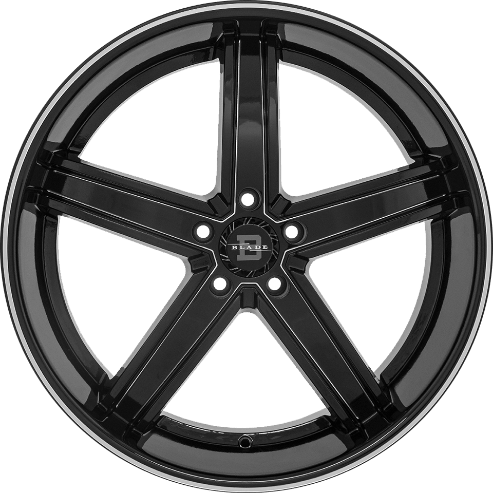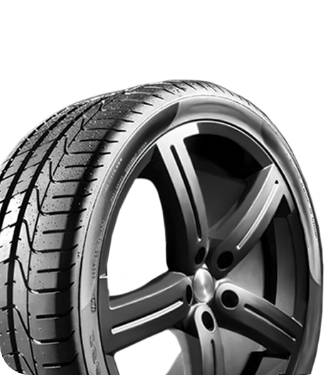

8 Signs That Your Tires May Be Unbalanced
Safety Tips |Tire balance isn’t something most drivers think about until there’s a problem. Yet, it plays a vital role in ensuring your car’s safety, fuel efficiency, and overall performance. Properly balanced tires distribute weight evenly across all wheels, reducing wear and tear while optimizing your driving experience.
If your tires are unbalanced, you may encounter a variety of symptoms that not only affect how your vehicle handles but also compromise your safety. Keep an eye (and ear) out for these telltale signs that your tires may be unbalanced.
1. Uneven Tire Wear
Uneven tire wear is one of the earliest and most visible signs of unbalanced tires. When a tire is unbalanced, certain areas experience more pressure than others, leading to irregular wear patterns. For example, you might notice excessive wearing on one side of the tire while the other appears untouched.
Feathered or scalloped edges are also clear signs of an imbalance. These problems can reduce the lifespan of your tires significantly, forcing you to spend more money to replace them more frequently and get a worse return on your investment. Regularly inspecting your tires for uneven wear can save you from costly replacements and ensure your car maintains optimal performance.
2. Vibrations in the Steering Wheel
If you’re feeling vibrations in your steering wheel while driving, particularly at speeds between 50 and 70 mph, unbalanced tires might be the culprit. Uneven weight distribution in one or more of the tires causes these vibrations, which throws off the wheel’s rotational symmetry.
What makes this even more alarming is that similar vibrations can stem from other faults, such as misaligned suspension or failing wheel bearings. To confirm whether the tires are to blame, consider when the vibrations occur. If they’re worse at higher speeds and seem to lessen when you slow down, it’s likely an issue of tire imbalance.

3. Vibrations in the Seat and Floor
While a driver may feel steering wheel vibrations up front, unbalanced rear tires can cause noticeable vibrations that radiate through the seat and floor of your car. These vibrations are not simply a nuisance; they can affect your comfort and concentration while driving.
Worse, continued driving with unbalanced tires can wear out other components of your car, such as shocks, struts, and bearings. Addressing these vibrations early can save you from additional repairs and costs further down the line.
4. Increased Fuel Consumption
Another sign that your tires may be unbalanced is if your vehicle’s fuel economy dips below its typical consumption. Uneven tires create additional rolling resistance, meaning your car needs to work harder to maintain speed and stability. Over time, this added effort leads to a noticeable decrease in miles per gallon.
While the loss of fuel economy won’t be significant, it’ll still be noticeable, especially if you haven’t changed any of your driving habits or patterns. If you notice your vehicle’s fuel economy is dipping as of late, consider checking your tires and ensuring they’re properly balanced.
5. Vehicle Pulling to One Side
Another common symptom of unbalanced tires is a car that pulls to one side, especially on straight roads. While pulling can also occur due to issues like wheel misalignment or improper tire pressure, unbalanced tires are a frequent cause.
This imbalance forces your tires to exert unequal forces on the ground, which tugs your car in one direction. Ignoring this issue can lead to premature tire wear and make it uncomfortable—and unsafe—to drive. If you notice consistent pulling, it’s important to get your tires checked right away before more serious issues develop.
6. Thumping Sound from Tires
Hearing an irregular thumping or bumping sound while driving is more than just an annoyance—it’s likely a warning sign of tire imbalance. These sounds result from the uneven distribution of weight within the tire, causing it to hit the road inconsistently. This thumping noise typically grows louder at higher speeds, making highway driving particularly unpleasant.
If you don’t address this problem immediately, the condition will worsen over time and lead to more substantial damage to your tires and suspension system. A quick visit to your mechanic or tire specialist can ensure prompt and efficient resolution of this issue.
7. Increased Road Noise
If your usual drive suddenly seems louder than normal, your tires could be to blame. Unbalanced tires often create excess road noise due to uneven weight distribution, generating more friction and reverberance.
This noise is especially noticeable on less-than-ideal road surfaces or when driving at higher speeds. While some road noise is inevitable, a clear and sudden increase could indicate an underlying imbalance. The good news is that fixing this issue through tire balancing will restore quiet and comfort to your rides.
8. Bad Shocks and Bearings
Long-term driving with unbalanced tires doesn’t just damage your tires; it places added strain on other vital components of your vehicle, including shocks and bearings. Shocks act as a cushion to your car, absorbing impact and ensuring smooth rides, while bearings help your wheels rotate freely.
Since unbalanced tires result in uneven force distribution, they can wear these parts out prematurely. Replacing shocks or bearings is much more expensive than addressing tire imbalance early on, so scheduling timely tire maintenance is a wise preventive measure.
Identifying the Problem
While there are many obvious signs of tire imbalance, pinpointing the cause often requires careful inspection. A simple self-test can help you identify whether your tires are unbalanced.
Start by paying attention to any unusual vibrations or noises while driving. Inspect your tires visually for spots of uneven wear or damage. If you’re still unsure, most local auto shops or service centers offer quick diagnostic checks specifically for tire imbalance, like RNR Tire Express! Remember, detecting the problem early is key to avoiding expensive long-term repairs.

The Solution to Unbalanced Tires
Correcting unbalanced tires involves a straightforward process known as tire balancing. During this process, technicians attach small weights to the rims of your wheels to evenly distribute the tire’s weight around the axle. Ideally, drivers should balance their tires during every routine tire rotation, or roughly every 5,000 to 7,500 miles.
Some modern shops even use computerized wheel balancers for added precision. Whether conducted at a mechanic’s garage or a dedicated tire service center, this routine maintenance ensures your vehicle operates at its highest potential while keeping you and your passengers safe.
Keep Your Tires Balanced and Safe with RNR Tire Express
Tire balancing may seem like a small detail, but its impact on your car’s performance and safety is critical. From reducing wear and tear to saving on fuel, balanced tires offer a smoother and more secure driving experience.
If you need to balance your tires in Tucson, RNR Tire Express is here to help! Our tire experts and specialists can perform any tire maintenance your vehicle needs or find you high-quality new ones if needed. Stop by for new tires or tire maintenance today!




